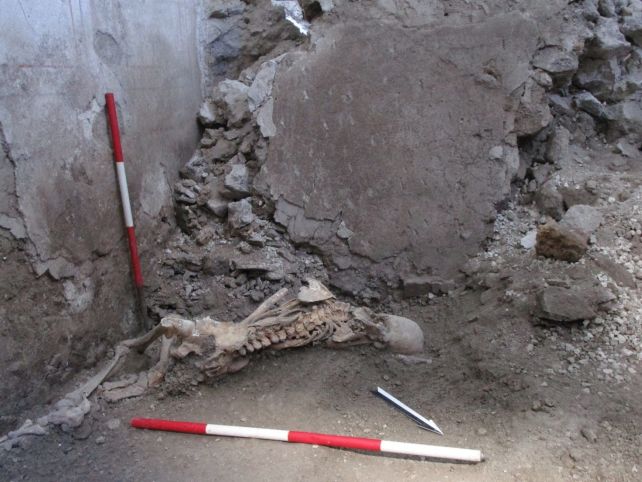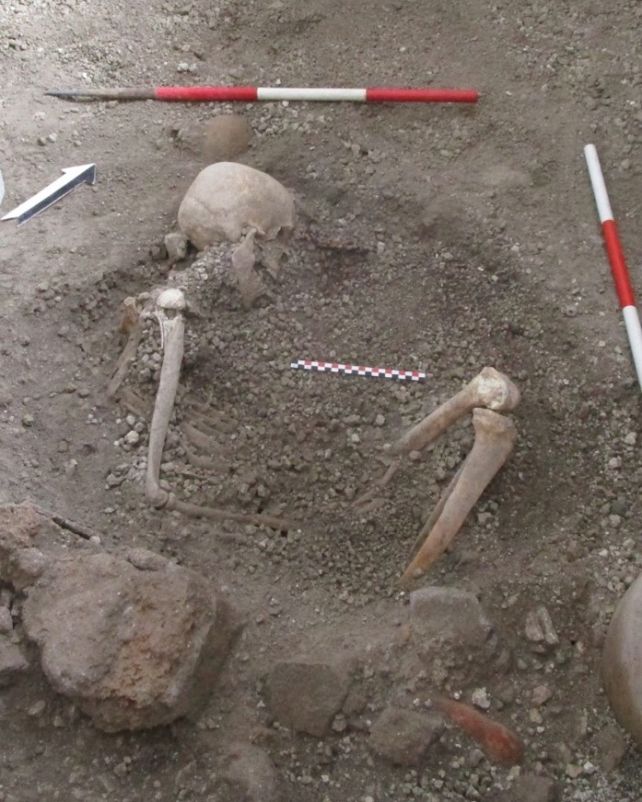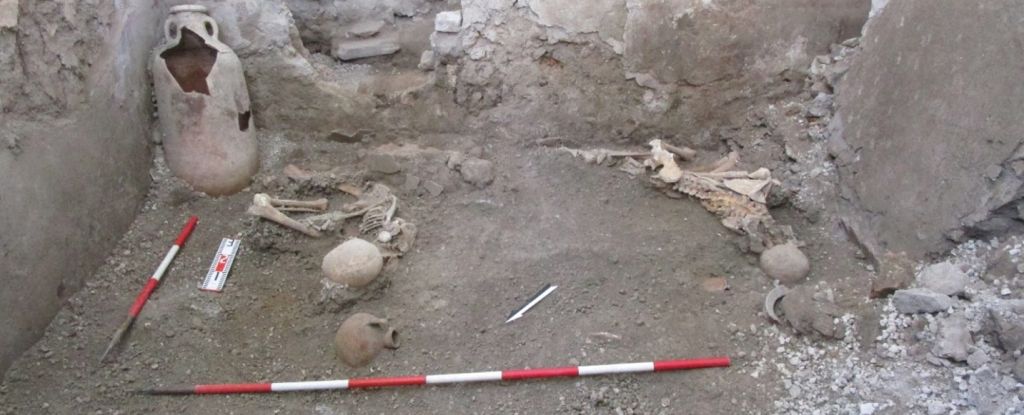The destruction of Pompeii wrought by the eruption of Vesuvius nearly 2,000 years ago was an absolutely devastating moment in human history.
Many of the residents of the ancient Roman city were asphyxiated and entombed in the ash and pumice that rained down during the first 18 hours of the eruption, or killed instantly by the intense heat of the pyroclastic surges that later barreled through the city.
The excavation of two newly discovered skeletons now reveals that there was another factor at play that made things even worse. These unfortunate individuals were crushed by falling walls destabilized by the simultaneous earthquakes that wracked the surrounding area.
Although we have the final moments of Pompeii almost perfectly preserved, a horrifying moment in time screaming silently for millennia, it can still be quite tricky to reconstruct events from what remains.
“These complexities are like a jigsaw puzzle in which all the pieces must fit together to unravel the complete picture,” says volcanologist Domenico Sparice of INGV-Osservatorio Vesuviano in Italy.
“We proved that seismicity during the eruption played a significant role in the destruction of Pompeii and, possibly, influenced the choices of the Pompeiians who faced an inevitable death.”
Although the modern site of Pompeii is renowned for the level of detail in which its citizens were preserved in their final moments, the buildings of the city are often found in a poor state, with roofs caved in, walls fallen, and pillars toppled.
One such house is the House of the Painters at Work, or Casa dei pittori al lavoro. Continuing the site’s already-extensive excavations in 2023, Sparice and his team worked on the two northernmost rooms, including the house’s kitchen.
As they worked, they noticed that the collapse of the walls did not quite match what they were expecting to find based on previous reconstructions of the way the eruption played out.
“We found peculiar characteristics that were inconsistent with the effects of volcanic phenomena described in the volcanological literature devoted to Pompeii,” says volcanologist Mauro Di Vito of INGV-Osservatorio Vesuviano. “There had to be a different explanation.”

Then, they found the skeletons: two men, both around 50 years old, and both with significant, bone-crushing trauma. One had fractures and breaks to the ribs, skull, pelvis, limbs, and spinal column. He probably would have died pretty much straight away.
The second had fractures to his right leg, both arms, skull, and pelvis that were also likely to have been immediately or nearly immediately fatal. But something else caught the researchers’ eyes. The man’s bones were found curled up, the arms over the head as though in a protective posture, with faint traces of a circular object directly above him, such as a wooden shield. It seems he had known danger was imminent from the masonry that fell on his body, and tried – in vain – to protect himself.
Moreover, both skeletons were found not buried in the volcanic pumice, but on top of it – suggesting that they had survived the first phase of the eruption, the rain of ash, but were killed by falling masonry before the pyroclastic surges arrived.

We know that seismic activity is a common accompaniment to volcanic eruptions, and in the decades leading up to the eruption of Vesuvius in 79 CE, earthquakes had been reported in the region. But the devastation of the town was so complete that it had been difficult to identify whether an earthquake had occurred at the same time as the eruption.
This house, and these skeletons, are the evidence that finally reveals the true extent of the catastrophe.
“New insight into the destruction of Pompeii gets us very close to the experience of the people who lived here 2,000 years ago,” says archaeologist Gabriel Zuchtriegel of the Pompeii Archaeological Park.
“The choices they made as well as the dynamics of the events, which remain a focus of our research, decided over life and death in the last hours of the city’s existence.”
The research has been published in Frontiers in Earth Science.





